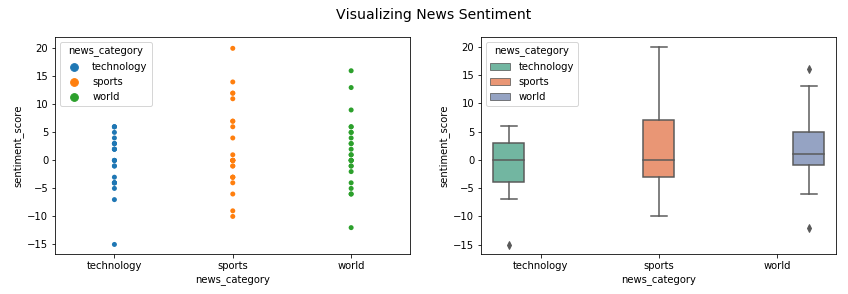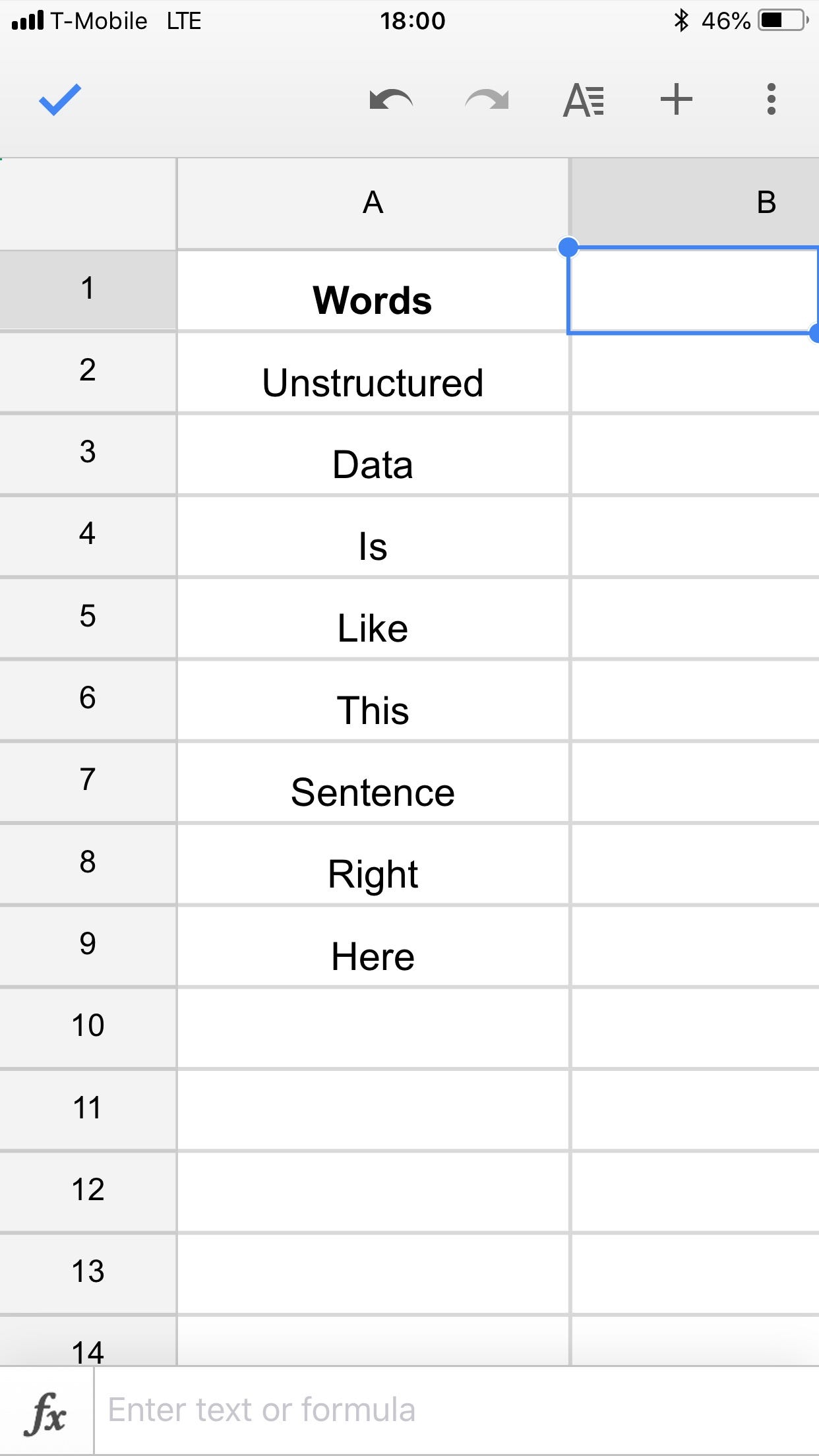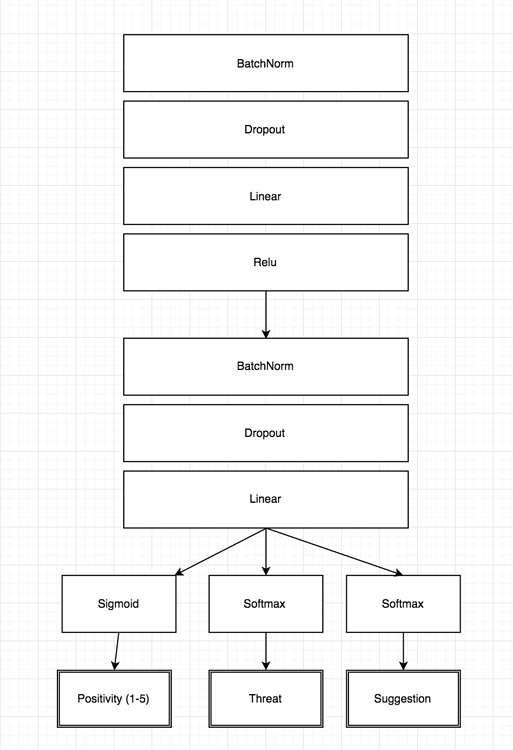45 sentiment analysis without labels
How to Build Your Own Text Classification Model Without Any ... - DZone Supervised learning is extensively used in natural language processing to build multi-class or multi-label text classifiers for solving a variety of use cases like spam detection, sentiment ... Sentiment Analysis: The What & How in 2022 - Qualtrics Machine learning-based sentiment analysis A computer model is given a training set of natural language feedback, manually tagged with sentiment labels. It learns which words and phrases have a positive sentiment or a negative sentiment. Once trained, it can then be used on new data sets.
Sentiment analysis on big sparse data streams with limited labels Sentiment analysis is an important task in order to gain insights over the huge amounts of opinionated texts generated on a daily basis in social media like Twitter. Despite its huge amount, standard supervised learning methods won't work upon such sort of data due to lack of labels and the impracticality of (human) labeling at this scale.
Sentiment analysis without labels
Four Sentiment Analysis Accuracy Challenges in NLP | Toptal Sentiment Analysis Challenge No. 1: Sarcasm Detection In sarcastic text, people express their negative sentiments using positive words. This fact allows sarcasm to easily cheat sentiment analysis models unless they're specifically designed to take its possibility into account. rafaljanwojcik/Unsupervised-Sentiment-Analysis - GitHub Based on word embeddings trained for given dataset using gensim's Word2Vec implementation, there was an unsupervised sentiment analysis performed, which achieved scores presented below. How to Succeed in Multilingual Sentiment Analysis without ... - Medium You can follow the proposed process of sentiment analysis in the figure below. First, we preprocess our texts in a foreign language (remove urls, emojis, digits and punctuation marks) and translate...
Sentiment analysis without labels. Guide To Sentiment Analysis Using BERT - Analytics India Magazine BERT is a transformer and simply a stack of encoders on one top of another. This is for understanding the text; hence we have encoders here. We'll be having three labels, namely - Positive, Neutral and Negative. The first task is to get feedback for the apps. Both negative and positive are good. Sentiment Analysis: First Steps With Python's NLTK Library Sentiment analysis is the practice of using algorithms to classify various samples of related text into overall positive and negative categories. With NLTK, you can employ these algorithms through powerful built-in machine learning operations to obtain insights from linguistic data. Remove ads Installing and Importing The Best 12 Sentiment Analysis Tools in 2021 - HubSpot Price: $45/month for Starter Plan, $360/month for Professional Plan, $1,200/month for Enterprise Plan. 2. Talkwalker. Image Source. Talkwalker's "Quick Search" is a sentiment analysis tool that's part of a larger customer service platform. This tool works best with your social media channels because it can tell you exactly how people feel about ... How to label text for sentiment analysis — good practices If you are working on sentiment analysis problems, be careful about text labelling. If you have never labelled text in your life, this is a good exercise to do. If you only rely on clean/processed text to learn, you can face a problem where the problem is not your model, but the information that you are using to train it. 5
Sentiment Analysis using Python [with source code] Train the sentiment analysis model for 5 epochs on the whole dataset with a batch size of 32 and a validation split of 20%. history = model.fit(padded_sequence,sentiment_label[0],validation_split=0.2, epochs=5, batch_size=32) The output while training looks like below: The python sentiment analysis model obtained 96% accuracy on the training ... Is it possible to do sentiment analysis of unlabelled text using ... In the 1st way, you definitely need a labelled dataset. In that way, you can use simple logistic regression or deep learning model like "LSTM". But in unsupervised Sentiment Analysis, You don't need any labeled data. In that way, you can use a clustering algorithm. K-Means clustering is a popular algorithm for this task. Sentiment Analysis: What is it and how does it work? - Awario Let's take a look at each of these sentiment analysis models. 1. Supervised machine learning (ML) In supervised machine learning, the system is presented with a full set of labeled data for training. This dataset consists of documents whose sentiment has already been determined by human evaluators (data scientists). Free Online Sentiment Analysis Tool - MonkeyLearn Sentiment analysis benefits: 👍. Quickly detect negative comments & respond instantly. 👍. Improve response times to urgent queries by 65%. 👍. Take on 20% higher data volume. 👍. Monitor sentiment about your brand, product, or service in real time.
Visual Sentiment Analysis with Noisy Labels by Reweighting Loss Request PDF | On Oct 1, 2018, Kailing Guo and others published Visual Sentiment Analysis with Noisy Labels by Reweighting Loss | Find, read and cite all the research you need on ResearchGate Sentiment Analysis with VADER- Label the Unlabelled Data VADER is a lexicon and rule-based sentiment analysis tool. It is used to analyze the sentiment of a text. Lexicon is a list of lexical features (words) that are labeled with positive or negative... Is it possible to do Sentiment Analysis on unlabeled data ... - Medium 1) Use the convert_label () function to change the labels from the "positive/negative" string to "1/0" integers. It is a necessary step for feeding the labels to a model. 2) Split the data into... How to Do Twitter Sentiment Analysis Without Breaking a Sweat? Sentiment Analysis (also known as Emotion AI) is the process of measuring the tone of writing and evaluating whether it is positive, neutral, or negative. Sentiment analysis is based on solutions developed in the field of natural language processing (NLP).
Evaluating Unsupervised Sentiment Analysis Tools Using Labeled Data Analysis Our analysis and code will be broken down into 3 phases: Getting acquainted with the data Building the analyzers formation Evaluating and interpreting 1. Get acquainted with the data As aforementioned, the data we're using is the combination of companies' reviews, which can be found using this Kaggle link.
Top 12 Free Sentiment Analysis Datasets | Classified & Labeled This sentiment analysis dataset consists of around 14,000 labeled tweets that are positive, neutral, and negative about the first GOP debate that happened in 2016. IMDB Reviews Dataset: This dataset contains 50K movie reviews from IMDB that can be used for binary sentiment classification.
Getting Started with Sentiment Analysis using Python Sentiment analysis is a natural language processing technique that identifies the polarity of a given text. There are different flavors of sentiment analysis, but one of the most widely used techniques labels data into positive, negative and neutral. ... AutoNLP is a tool to train state-of-the-art machine learning models without code. It ...
Text Classification for Sentiment Analysis - StreamHacker 3) Manually review your classified texts to make sure they are correct. 4) Train a normal text classifier using those texts. 5) Use your classifier on the rest of your unlabelled texts, to find new positive or negative examples. 6) Go to #3 until you have a good labelled set of texts & classifier.
Unsupervised Sentiment Analysis. How to extract sentiment from the data ... It is extremely useful in cases when you don't have labeled data, or you are not sure about the structure of the data, and you want to learn more about the nature of process you are analyzing, without making any previous assumptions about its outcome.
Tutorial: Fine-tuning BERT for Sentiment Analysis - by Skim AI By adding a simple one-hidden-layer neural network classifier on top of BERT and fine-tuning BERT, we can achieve near state-of-the-art performance, which is 10 points better than the baseline method although we only have 3,400 data points. In addition, although BERT is very large, complicated, and have millions of parameters, we only need to ...
How to perform sentiment analysis and opinion mining - Azure Cognitive ... Sentiment Analysis applies sentiment labels to text, which are returned at a sentence and document level, with a confidence score for each. The labels are positive, negative, and neutral. At the document level, the mixed sentiment label also can be returned. The sentiment of the document is determined below: Confidence scores range from 1 to 0.
Sentiment Analysis | Comprehensive Beginners Guide - Thematic Sentiment analysis is used to determine whether a given text contains negative, positive, or neutral emotions. It's a form of text analytics that uses natural language processing (NLP) and machine learning. Sentiment analysis is also known as "opinion mining" or "emotion artificial intelligence". Sentiment Scoring
Unsupervised Sentiment Analysis | Data Science and Machine ... - Kaggle Unsupervised Sentiment Analysis. Sentiment analysis refers to the use of natural language processing, text analysis, computational linguistics, and many more to identify and quantify the sentiment of some kind of text or audio. Often, you may not have the convenience of a well-labeled training dataset. In those situations, you need to use ...
How to label sentiment using NLP? - Data Science Stack Exchange Simplest Approach - Use textblob to find polarity and add the polarity of all sentences. If the overall polarity of tweet is greater than 0 , then it's positive and if less than zero , you can label it as negative
Sentiment Analysis in Natural Language Processing - Analytics Vidhya Sentiment Analysis, as the name suggests, it means to identify the view or emotion behind a situation. It basically means to analyze and find the emotion or intent behind a piece of text or speech or any mode of communication. In this article, we will focus on the sentiment analysis of text data. We, humans, communicate with each other in a ...
How to Succeed in Multilingual Sentiment Analysis without ... - Medium You can follow the proposed process of sentiment analysis in the figure below. First, we preprocess our texts in a foreign language (remove urls, emojis, digits and punctuation marks) and translate...
rafaljanwojcik/Unsupervised-Sentiment-Analysis - GitHub Based on word embeddings trained for given dataset using gensim's Word2Vec implementation, there was an unsupervised sentiment analysis performed, which achieved scores presented below.

A Practitioner's Guide to Natural Language Processing (Part I) — Processing & Understanding Text ...
Four Sentiment Analysis Accuracy Challenges in NLP | Toptal Sentiment Analysis Challenge No. 1: Sarcasm Detection In sarcastic text, people express their negative sentiments using positive words. This fact allows sarcasm to easily cheat sentiment analysis models unless they're specifically designed to take its possibility into account.











Post a Comment for "45 sentiment analysis without labels"